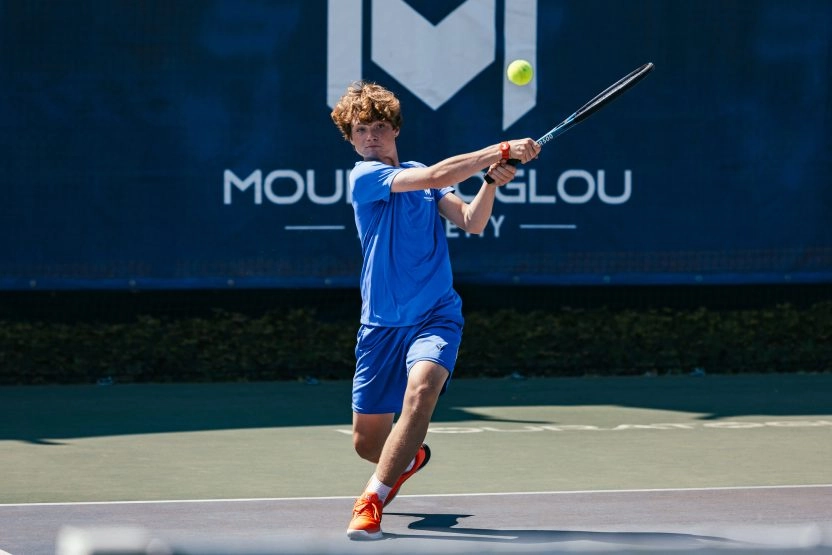
Tennis rowers are formidable opponents. They play a defensive style, returning every ball with great regularity. Against this type of player, it can be difficult to find openings to score points. Their ability to stay at the back of the court, return every shot and create long rallies can frustrate many players. But with the right tactics, it’s possible to find the keys to winning against a rower in tennis. Here are a few strategies to help you do just that. Master the subtleties of your defensive tactics thanks to the tennis study inspired by the Mouratoglou Methodology.

1. Adopt a patient and strategic approach
The first mistake you should avoid making against a rower is trying to conclude too quickly. These opponents are masters in the art of prolonging exchanges, pushing you into a corner. It’s important to adopt a patient approach. Take the time to build up the point by varying your shots, rather than trying to hit hard with every ball.
- Vary heights and spin: Alternating between forehands and backhands, and between short and longer shots, helps to break your opponent’s rhythm. This can put them in difficulty and prevent them from finding their feet on the court.
- Use slice and drop shots: The slice can be an effective weapon for breaking the other player’s rhythm, as can high, domed balls, similar to Nadal’s style against a Federer who prefers fast balls.

2. Show variety in your game
To win against a rower, variation is essential. This type of player thrives on predictable exchanges. To avoid this, you need to take them out of their comfort zone. By varying the angles and effects, you can surprise them.
- Attack by coming up to the net: Coming up to the net followed by a volley can be an effective way of gaining an advantage. After playing a short ball or hitting a powerful forehand that pushes your opponent back, go up for a quick finish.
- Use bunts: Bunts can force the opponent off the baseline, a place where they feel safe. If you play well-placed drop shots, you force them up to the net, where they are often less comfortable.

3. Impose your style of play
It’s crucial not to get caught up in your opponent’s game. Rowers tend to make exchanges longer and play on your frustration. You need to impose your own style of play. If you’re an aggressive player, try to attack more often, even if it means taking risks.
- Try to dictate the game: Try to control the centre of the court by taking the ball early, which will give you more opportunities to attack. The earlier you can hit the ball, the less time your opponent will have to organise.
- Exploit your opponent’s weakness: Most tennis players have a weaker side, often the backhand. Concentrate on this side and exploit it with crosscourt shots or well-placed shots.

4. Use phased attack tactics
Rather than trying to close out the point at the start of the rally, it may be a good idea to adopt a phased attacking tactic. The aim is to prepare the attack in several stages, playing deep shots to push the other player back, then trying to get him to the net with drop shots.
- Prepare the attack gradually: By hitting deep, heavy shots, you can push the rower back and create an opening for a winning shot or a climb to the net.
- Hit powerful forehands at the end of the stroke: When the opponent is in trouble, finish the point with a powerful shot into the empty space.

5. Manage your mind
Rowers are experts at frustrating you. They return every ball, pushing you to make mistakes out of impatience. You need to learn how to deal with this frustration to stay focused throughout the match. This means not trying to finish the point at all costs, but building methodically.
- Stay calm and patient: Even if the exchanges last a long time, keep your cool. Don’t let the length of the discussion frustrate you.
- Celebrate your small successes: Win an important point? Show your opponent that you’re there – it can put pressure on him.

6. Choosing when to attack
The key to winning against a rower also lies in the ability to choose the right moments to go on the offensive. Rather than rushing into things, try to prepare your attacks well and strike when the opportunity really presents itself.
- Use short balls to push your opponent forward, and then try to put them away with an end-of-court shot.
- Take control of the game when your opponent is out of position. By attacking at the right moment, you can destabilise them.















